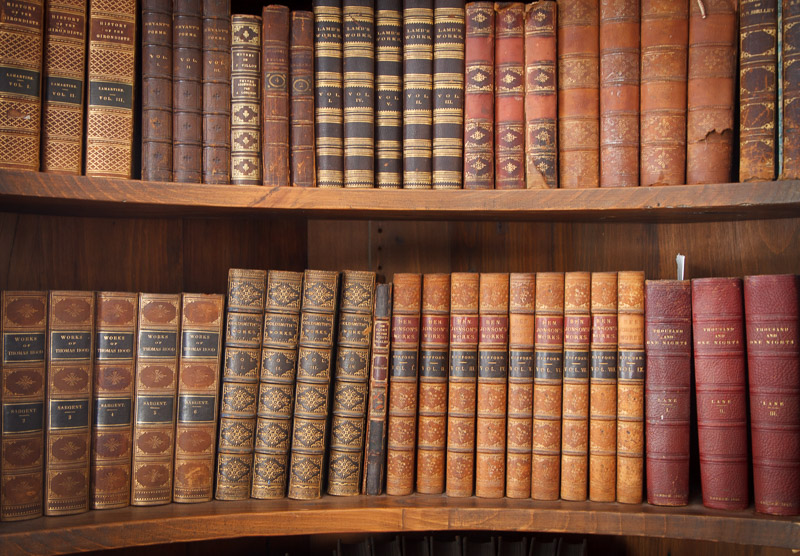 Meanwhile, on the other side of the living room: a rustic bookcase with classic editions of English literature. I never actually opened any; the muted colors of the bindings were enough on this day.
Meanwhile, on the other side of the living room: a rustic bookcase with classic editions of English literature. I never actually opened any; the muted colors of the bindings were enough on this day.
{ 0 comments }
Images of New England
Posts tagged as:
 Meanwhile, on the other side of the living room: a rustic bookcase with classic editions of English literature. I never actually opened any; the muted colors of the bindings were enough on this day.
Meanwhile, on the other side of the living room: a rustic bookcase with classic editions of English literature. I never actually opened any; the muted colors of the bindings were enough on this day.
{ 0 comments }
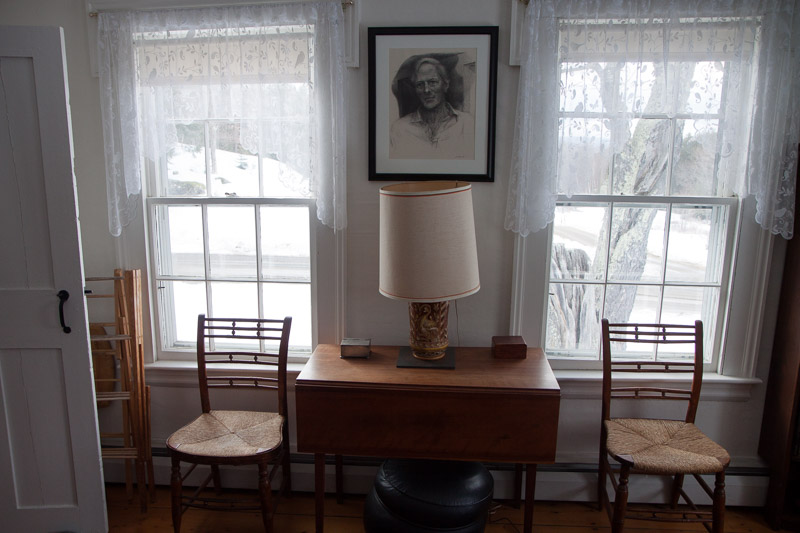 The portrait on this living room wall is of the poet F.D. Reeve, who lived here with his wife, the writer Laura C. Stevenson, from 1994 until he passed away in 2013.
The portrait on this living room wall is of the poet F.D. Reeve, who lived here with his wife, the writer Laura C. Stevenson, from 1994 until he passed away in 2013.
{ 0 comments }
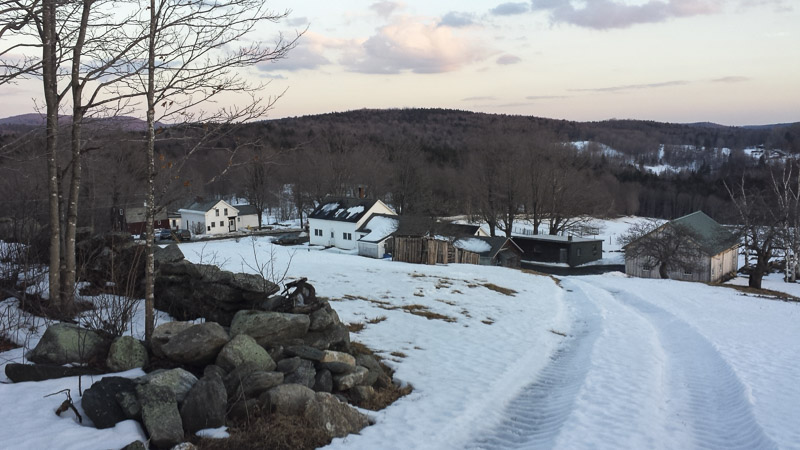 By way of comparison (and to illustrate how good smartphone cameras are), this was taken at about the same time as the previous shot, but on a Samsung Galaxy S4, which by no means has a top of the line camera. But the shot holds its own with the previous one, taken with a good Canon camera and a very good Canon lens (except perhaps in making a large print).
By way of comparison (and to illustrate how good smartphone cameras are), this was taken at about the same time as the previous shot, but on a Samsung Galaxy S4, which by no means has a top of the line camera. But the shot holds its own with the previous one, taken with a good Canon camera and a very good Canon lens (except perhaps in making a large print).
I like how this photo gives you more ready access to the buildings, even though I didn’t think I stepped in closer than on the other shot. Could just be that the Samsung has a 31mm lens, which brings you closer than the Canon lens, which was set at 26mm.
{ 0 comments }
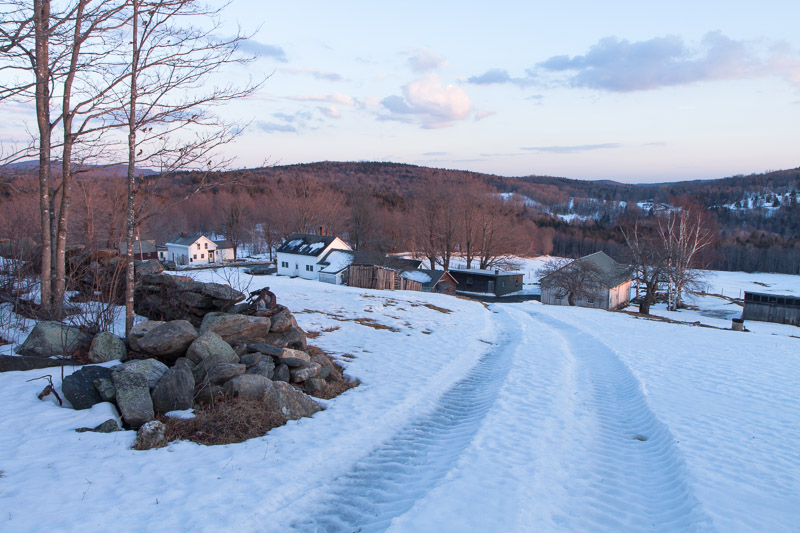 Jeff Cox builds his wonderful 1985 book, Seasonal Celebrations, around the Chinese lunar-solar calendar, which divides the year into twenty four distinct periods. They begin with the Winter Solstice, and are then demarcated by the new or full moon, (or the equinoxes and remaining solstice). The names given to the periods are pure poetry; right now we are probably in The Period of Awakening of Creatures (Ching Che), which in 1986 ran from the full moon on Feb. 24 to the new moon on March 10.
Jeff Cox builds his wonderful 1985 book, Seasonal Celebrations, around the Chinese lunar-solar calendar, which divides the year into twenty four distinct periods. They begin with the Winter Solstice, and are then demarcated by the new or full moon, (or the equinoxes and remaining solstice). The names given to the periods are pure poetry; right now we are probably in The Period of Awakening of Creatures (Ching Che), which in 1986 ran from the full moon on Feb. 24 to the new moon on March 10.
I think of that book now, because it’s where I first found a reference to “the most delicate pastel pinks and blues” in the skies at dawn and dusk in the heart of winter. Skies like I had a couple of days ago when I took this photograph. He writes about it under The Period of the Greater Cold, (Ta Han), beginning on the new moon on January 10 to the full moon on January 26 (1986).
I’ve seen those pastels mostly in early March, maybe because I’m out more at that time of the year, the weather being warmer. As it was on this day, about 55 degrees when I took the picture.
Tomorrow, for comparison, I’ll be posting a smartphone picture of this same scene, taken at the same time of day.
{ 0 comments }
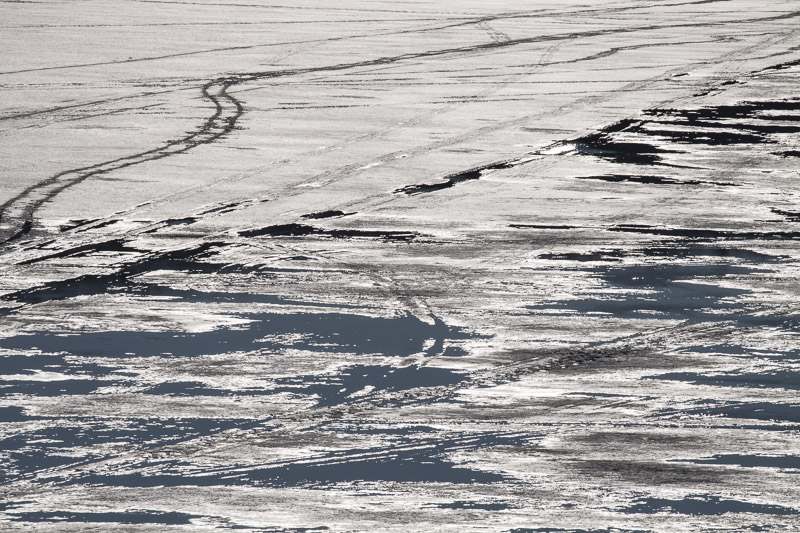 Two months out from the Solstice, and nudged along by a couple of sunny days in the 60’s, winter was bound to recede, even with the two feet of new snow recently. And the sap, right on cue, just started running a couple days ago. Can’t help but feel a little giddy, and reassured, watching Spring unfold.
Two months out from the Solstice, and nudged along by a couple of sunny days in the 60’s, winter was bound to recede, even with the two feet of new snow recently. And the sap, right on cue, just started running a couple days ago. Can’t help but feel a little giddy, and reassured, watching Spring unfold.
{ 0 comments }
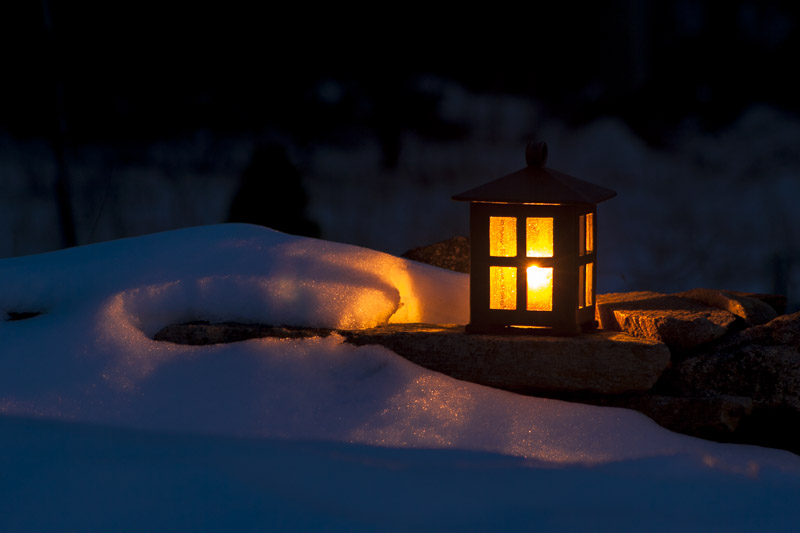 A few months after I bought my first digital camera – a Canon 20D more than a decade ago – I took it out for a spin at dusk, with a tripod, to see what it could do.
A few months after I bought my first digital camera – a Canon 20D more than a decade ago – I took it out for a spin at dusk, with a tripod, to see what it could do.
There were/are many reasons to embrace digital, but initially, the biggest one for me was in the instant feedback via the LCD screen, a whole new technology for cameras. Thus I could shoot to my heart’s content (no film, very cheap, another reason), and rework my compositions till I found some keepers.
My old friend Dennis Stock, who was about 80 years old at the time, initially turned me on to digital; he let me borrow a consumer digital that someone had let him use. Early digital had its limitations though, so I didn’t jump in till a year later, when the technology and the price became incredibly attractive.
Haven’t looked back.
{ 0 comments }
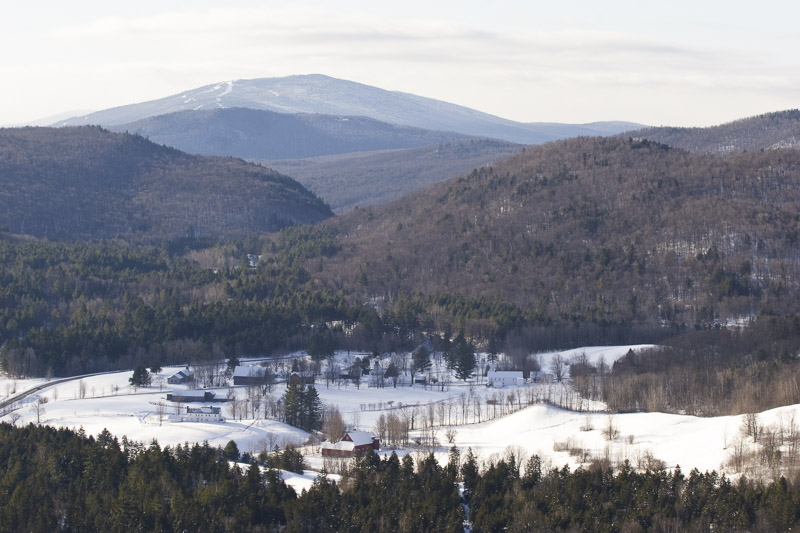 This is the place where Calvin Coolidge, the 30th US president, was born and raised. It was also where he was sworn in as President in August of 1923, following the death of President Warren Harding. The village is an historic site and remains virtually unchanged since the early 20th century, a good example of a classic Vermont hill town from that era. That’s Okemo Mountain off in the distance.
This is the place where Calvin Coolidge, the 30th US president, was born and raised. It was also where he was sworn in as President in August of 1923, following the death of President Warren Harding. The village is an historic site and remains virtually unchanged since the early 20th century, a good example of a classic Vermont hill town from that era. That’s Okemo Mountain off in the distance.
{ 0 comments }
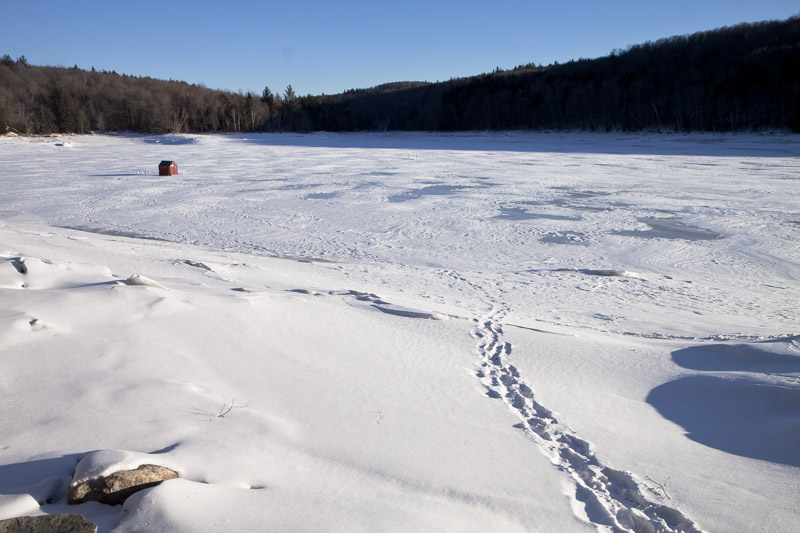 One antidote for the cabin fever that settles in after the holidays is to get away for a bit; in this case out to the ice and into your little fishing shack, away from everything (but yourself), if just for while. And – the best part – you can just pretend you’re out there to fish.
One antidote for the cabin fever that settles in after the holidays is to get away for a bit; in this case out to the ice and into your little fishing shack, away from everything (but yourself), if just for while. And – the best part – you can just pretend you’re out there to fish.
{ 0 comments }
 This photo was taken a year ago, but the fraying flag seems to have a different resonance now, given the political winds blowing through our homes and neighborhoods, all across the land.
This photo was taken a year ago, but the fraying flag seems to have a different resonance now, given the political winds blowing through our homes and neighborhoods, all across the land.
If there’s any upside to the recent election results here, it’s that many of us are working out new paradigms for being a citizen – and a human being – in these challenging times. Digging deeper for inspiration and information,* and at the same time reaching for the longer view, if you will.
Unfortunately (spoiler alert), we’ve been here before. History is replete with profoundly difficult circumstances, no matter the time or culture.
Perhaps not altogether unrelated, I’ve found myself back in the 13th century with Genghis Khan and the beginnings of the Mongol Empire. It started rather innocuously;** my eye catching a new title on display in a local library, “Genghis Khan and the Quest for God” by Jack Weatherford, which explores the remarkable notion that Genghis Khan allowed freedom of worship to all those he conquered, AND that this approach to governance found its way to Europe and eventually the American colonies.
Then it was off to the races with the first three of Conn Iggulden’s five volume work of historical fiction on Genghis and his empire.
And finally the historian Frank McLynn’s amazing biography, Genghis Khan: His Conquests, His Empire and His Legacy, a remarkably detailed and sometimes overwhelming account of the man, with over 100 pages (!!!) of bibliography and footnotes and a wonderful photo of present day Mongolian horsemen by Rick Sammon worked onto the front cover.
Yes there is a rise and fall of civilizations, with remarkably similar stories. Explore any one and you’ll probably understand them all.
* The New Yorker has some suggestions here.
** Actually it started in high school; our athletic teams were nicknamed the “ Golden Horde”. I knew then it had something to do with the Mongols, but only recently understood the specifics: the Golden Horde was the name given to the successors of Genghis that ruled the northwestern most regions of the Mongol empire after his death.
{ 0 comments }